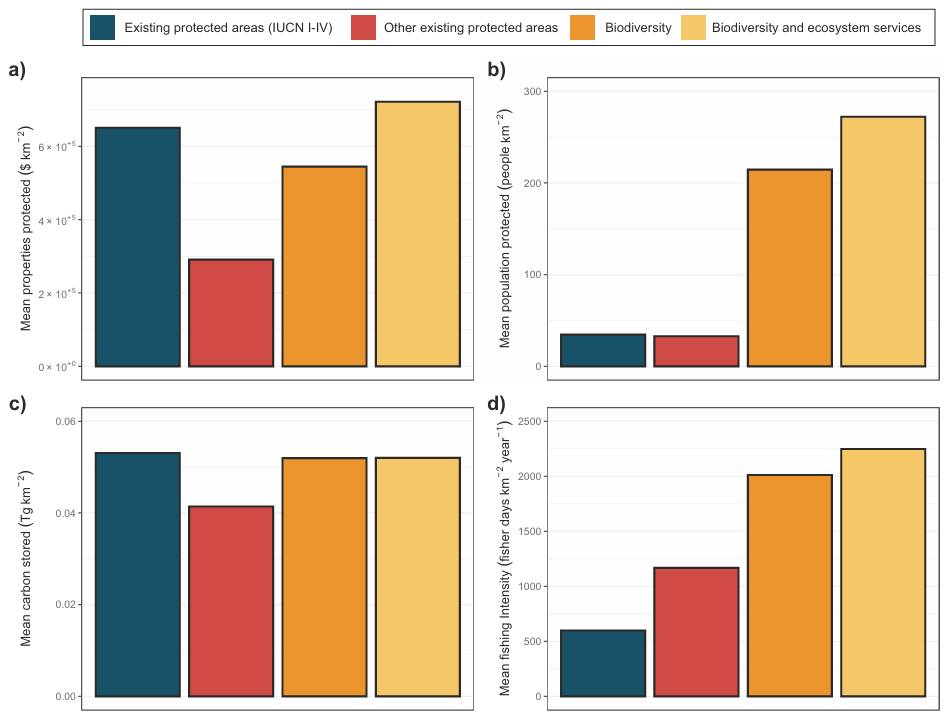September 21, 2023 | Nature Communications | Source |
Introduction: Human activities are threatening global biodiversity and the ecosystem services provided by mangroves. Current conservation efforts often focus on protecting biodiversity but overlook the critical ecosystem services mangroves offer, such as coastal protection and carbon storage. Researchers from Australia, Belgium, and Canada identify priority areas that could better balance biodiversity protection with the preservation of these vital services.
Key findings: Despite 13.5% of mangrove areas being strictly protected, many species and high-value ecosystem service areas remain unprotected. Strategically expanding protection to cover 30% of global mangroves could significantly enhance benefits, including safeguarding coastal property, supporting millions of people, and boosting carbon sequestration. The analysis highlights that Asia, with its rich mangrove biodiversity and high dependency on these ecosystems, is particularly crucial for conservation efforts.
The study underscores the need to integrate ecosystem services into conservation planning. Current protection measures often neglect these services and tend to avoid areas with high human activity, which can lead to missing key biodiversity hotspots. Optimizing conservation to include ecosystem services could enhance both human well-being and biodiversity outcomes.
Restoring mangroves is costly and sometimes less effective than preserving natural mangroves. Countries, especially in the developing world, need support to improve mangrove management and protection. High-income countries, which often contribute to biodiversity loss, could assist by financing global mangrove conservation.

Figure | Mean ecosystem services provided by mangroves in different protected areas.
Existing IUCN I-IV protected areas system (blue), other existing protected areas (red), and proposed expansion to 30% for protection for biodiversity alone (orange) and for biodiversity and ecosystem services (yellow). Ecosystem services were: (a) properties and (b) population safeguarded from flooding, (c)carbon stored and (d) fishing intensity supported by mangroves.




